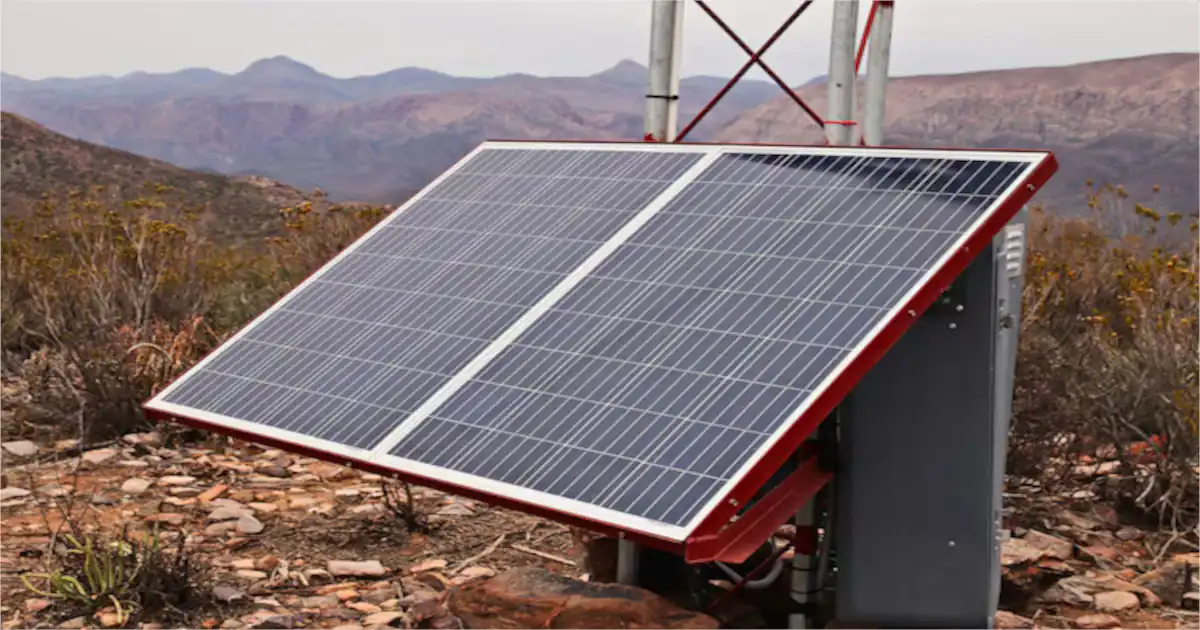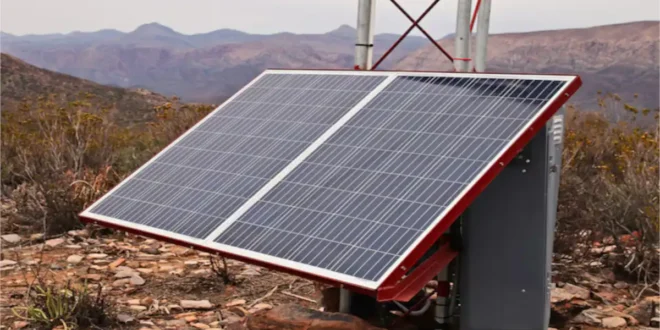Table of Contents
ToggleEmbracing Energy Independence: off grid solar system
As the world increasingly shifts towards sustainable energy solutions, off-grid solar systems have emerged as a viable alternative for those seeking energy independence. Whether you live in a remote area, want to reduce your carbon footprint, or simply desire a backup power solution, off-grid solar systems offer numerous advantages. In this article, we’ll explore what off-grid solar systems are, how they work, their benefits, components, installation process, and maintenance tips, all while ensuring the content is fully optimized for search engines.
What is an Off-Grid Solar System?
An off-grid solar system is a self-sufficient energy system that operates independently of the traditional electrical grid. This means that the energy produced by solar panels is stored in batteries for later use, allowing homeowners and businesses to generate and utilize their own electricity without relying on external sources.
Key Features of Off-Grid Solar Systems
- Independence from the Grid: Off-grid systems allow users to produce their own electricity, making them less vulnerable to power outages and fluctuations in energy prices.
- Energy Storage: These systems typically include batteries that store excess energy produced during sunny days for use during cloudy days or at night.
- Sustainability: Off-grid solar systems utilize renewable energy, significantly reducing reliance on fossil fuels and minimizing environmental impact.
- Scalability: They can be designed to meet specific energy needs, making them suitable for a variety of applications, from small cabins to large homes.
How Off-Grid Solar Systems Work
To understand how off-grid solar systems function, it’s essential to grasp the basic components involved in the system and how they interact.

- Solar Panels: These are the primary source of energy, converting sunlight into electricity through photovoltaic cells.
- Charge Controller: This device regulates the voltage and current coming from the solar panels to the batteries, preventing overcharging and extending battery life.
- Batteries: Energy generated by the solar panels is stored in batteries for later use. Various types of batteries are available, including lead-acid and lithium-ion.
- Inverter: This component converts the direct current (DC) electricity stored in batteries into alternating current (AC) electricity, which is used by most household appliances.
- Backup Generator (optional): Some off-grid systems include a backup generator to provide additional power during extended periods of low sunlight or high demand.
The Energy Production Cycle
- Solar Energy Generation: Solar panels convert sunlight into electricity during daylight hours.
- Energy Storage: The generated electricity is stored in batteries for later use.
- Power Conversion: When electricity is needed, the stored DC power is converted to AC power by the inverter for use in household appliances.
- Energy Consumption: Users can draw power from the batteries as needed, using the stored energy to power their homes or businesses.
- Monitoring and Management: Many modern off-grid systems include monitoring technology that allows users to track energy production and consumption, optimizing efficiency.
Benefits of Off-Grid Solar Systems
Off-grid solar systems come with a myriad of advantages, making them an attractive option for many homeowners and businesses.
1. Energy Independence
One of the most significant benefits of off-grid solar systems is the independence they provide from the utility grid. This autonomy means you’re less susceptible to energy price fluctuations and outages caused by extreme weather or grid failures. In remote areas where grid access is limited or non-existent, off-grid systems can be a lifeline.
2. Environmental Impact
Utilizing solar energy contributes to a cleaner environment by reducing reliance on fossil fuels. Off-grid solar systems help decrease greenhouse gas emissions and lower your carbon footprint, making a positive impact on climate change.
3. Cost Savings
While the initial investment for an off-grid solar system can be substantial, the long-term savings can be significant. By generating your own electricity, you can eliminate or greatly reduce your monthly utility bills. Furthermore, many governments offer incentives, tax credits, and rebates for solar energy systems, further enhancing cost-effectiveness.
4. Low Maintenance
Solar panels typically require minimal maintenance. Regular cleaning and periodic checks of the system components are usually sufficient to keep the system operating efficiently. With no moving parts, solar panels can last 25 years or more with proper care.
5. Increased Property Value
Installing an off-grid solar system can increase the value of your property. As energy efficiency and sustainability become more desirable among homebuyers, a solar installation can make your home more attractive on the market.
Understanding the Costs of Off-Grid Solar Systems
Initial Investment
The initial cost of setting up an off-grid solar system can vary widely based on several factors, including:
- System Size: The larger the system, the more solar panels, batteries, and inverters will be needed, leading to higher costs.
- Quality of Components: Higher-quality components may come with a higher price tag but can offer better efficiency and longevity.
- Installation: Professional installation can add to the overall cost, but it is often recommended to ensure the system is set up correctly.
- Location: Geographic factors, such as local sunlight availability and zoning regulations, can also impact installation costs.
Planning Your Off-Grid Solar System
Before diving into the installation of an off-grid solar system, it’s essential to plan carefully. Here are key steps to ensure a successful project.
1. Assess Your Energy Needs
Start by conducting an energy audit to determine how much electricity your household or business consumes. List all your appliances, their wattage, and how many hours you use them daily. This will help you calculate your total energy requirements, measured in kilowatt-hours (kWh).
2. Evaluate Your Site
Your location plays a significant role in the effectiveness of your solar system. Factors to consider include:
- Sunlight Exposure: Ensure your site receives adequate sunlight throughout the year, with minimal shading from trees or buildings.
- Roof Orientation and Angle: South-facing roofs with a suitable angle can maximize solar panel efficiency.
- Space for Components: Ensure you have enough space for solar panels, batteries, and other system components.
3. Choose the Right Components
Based on your energy needs and site evaluation, select the appropriate solar panels, batteries, inverter, and charge controller. Research and compare various brands and models to find the best fit for your requirements and budget.
4. Budget for Installation
Consider all costs, including equipment, installation, permits, and any additional features like backup generators. Having a clear budget will help you make informed decisions throughout the process.
5. Consult with Professionals
If you’re unfamiliar with solar technology or electrical systems, consulting with a professional solar installer can provide valuable insights and ensure your system is designed and installed correctly.
Installation Process
Once you’ve completed your planning, it’s time to install your off-grid solar system. The installation process typically involves several steps:
1. Secure Necessary Permits
Before installation, check with local authorities to determine if you need any permits for your solar system. This step is crucial to ensure compliance with zoning laws and regulations.
2. Prepare the Site
Clear the installation area, ensuring it’s free of debris and shading obstacles. If you’re mounting solar panels on a roof, ensure the structure is sound and capable of supporting the panels.
3. Install Solar Panels
Mount the solar panels according to the manufacturer’s guidelines. Ensure they are securely fastened and oriented for optimal sunlight exposure.
4. Connect the Charge Controller and Batteries
Install the charge controller and connect it to the solar panels and batteries. Ensure all connections are secure and correctly configured.
5. Install the Inverter
Connect the inverter to the batteries and ensure it’s correctly configured for your system. The inverter will allow you to convert and use the stored energy in your home.
6. Conduct System Testing
Before finalizing the installation, test the system to ensure all components are functioning correctly. Check the connections, battery charging, and energy output.
7. Monitor Performance
Once installed, monitor your system’s performance regularly. Many systems come with monitoring tools to help you track energy production and consumption.
Maintenance of Off-Grid Solar Systems
Maintaining your off-grid solar system is essential for ensuring long-term efficiency and reliability. Here are some maintenance tips to keep your system in top shape.
1. Regular Cleaning
Dust, debris, and bird droppings can accumulate on solar panels, reducing their efficiency. Clean the panels periodically, especially after significant weather events. Use a soft brush or cloth and mild soap with water to avoid scratching the panels.
2. Check Connections
Inspect all electrical connections periodically to ensure they are secure and free of corrosion. Loose connections can lead to energy loss and safety hazards.
3. Monitor Battery Health
Check the health and charge levels of your batteries regularly. If you notice a significant drop in capacity or Solar panels performance, it may be time to replace them.
4. Professional Inspections
Consider scheduling professional inspections every few years to identify potential issues before they become major problems. Professionals can provide insights and perform maintenance tasks that may require specialized knowledge or tools.
5. Keep an Eye on System Performance
Utilize monitoring tools to track the performance of your off-grid solar system. Keep an eye on energy Solar panels production and consumption patterns to identify any inefficiencies.
Conclusion
Off-grid solar systems provide a sustainable and cost-effective solution for those seeking energy independence. With careful planning, installation, and maintenance, these systems can offer reliable electricity for years to come. As technology advances and prices continue to drop, off-grid solar systems will likely become an increasingly popular choice for homeowners and businesses alike. By harnessing the power of the sun, you not only contribute to a cleaner environment but also take control of your energy future.Investing in an off-grid solar system may seem daunting, but the benefits of energy independence, reduced environmental impact, and long-term savings make it a worthwhile endeavor. Whether you’re considering a small setup for a cabin or a comprehensive system for your home, the journey to off-grid living starts with understanding your needs and taking the first steps towards a sustainable future.
Frequently Asked Questions (FAQs)
What is an off-grid solar system?
An off-grid solar system is a self-sufficient energy solution that generates electricity independently from the utility grid. It typically consists of solar panels, a charge controller, batteries for energy storage, and an inverter to convert stored energy for household use. This setup allows users to produce and utilize their own power, providing greater energy independence.How do off-grid solar systems work?
These systems operate by capturing sunlight with solar panels, converting it into electricity. The generated energy is stored in batteries, allowing users to access power even when the sun isn’t shining. An inverter is used to convert the stored direct current (DC) electricity into alternating current (AC), which is used by most household appliances.What are the benefits of using an off-grid solar system?
Off-grid solar systems offer numerous advantages, including energy independence, reduced electricity bills, and a lower carbon footprint. They provide reliable power in remote areas, decrease reliance on fossil fuels, and can increase property value. Additionally, many regions offer financial incentives for installing solar technology.How much does it cost to install an off-grid solar system?
The installation costs of an off-grid solar setup can vary significantly based on system size, component quality, and installation complexity. Homeowners should consider the total energy needs and budget for both initial installation and ongoing maintenance costs. While upfront expenses can be high, long-term savings on energy bills can make it a worthwhile investment.How do I maintain my off-grid solar system?
Regular maintenance is crucial for optimal performance. This includes cleaning solar panels, checking battery health, and inspecting electrical connections for corrosion. Monitoring the system’s performance with available tools can help identify any inefficiencies. Scheduling professional inspections can further ensure the longevity and reliability of the system.
Can I expand my off-grid solar system in the future?
Yes, off-grid solar systems can be designed with scalability in mind. If your energy needs increase, you can add more solar panels, batteries, or other components to your existing setup. It’s essential to consult with a professional installer to ensure that any expansions are compatible with the current system configuration.
READ ALSO: The Fascinating World of Elephant Fish: A Comprehensive Guide
 Touch Blog
Touch Blog



